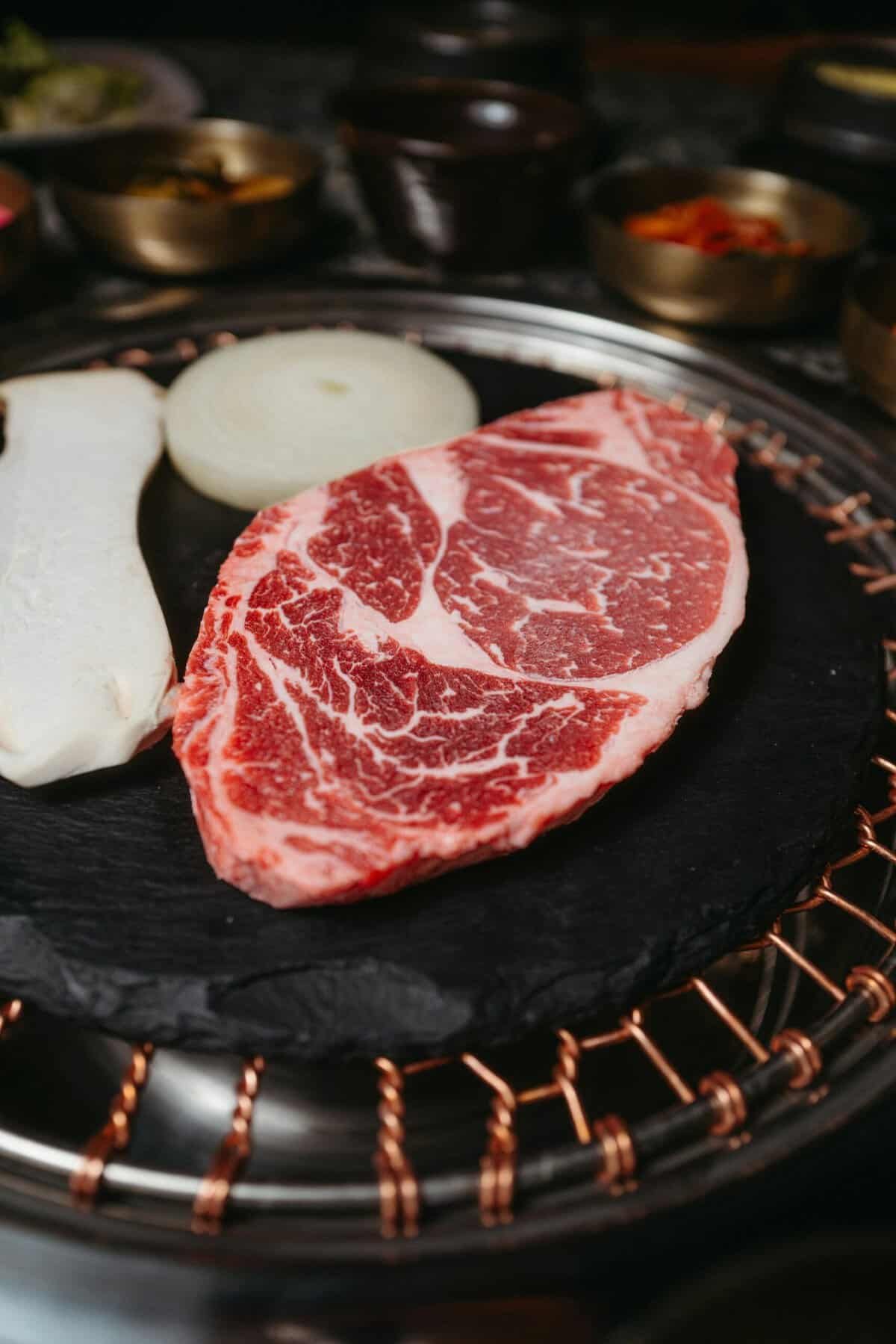Have you ever wondered what traditional Korean dishes incorporate the unique ingredient of lotus root? Known for its crunchy texture and slightly sweet, nutty flavor, lotus root is a staple in many Korean culinary traditions. Its distinctive appearance, with a pattern of holes, adds a visual delight to any dish. Let’s explore some of these traditional Korean dishes that feature the use of lotus root.
The Versatility of Lotus Root in Korean Cuisine
Lotus root, or “yeongeun” in Korean, has been a part of Korean cuisine for centuries. It’s known for its nutritional benefits, high in fiber, vitamins, and minerals. In terms of culinary usage, it can be stir-fried, boiled, pickled, or even added to soups and stews. Its versatility makes it a much-loved ingredient in many Korean households.
Nutritional Benefits of Lotus Root
Before we dive into the specific dishes, it’s worth noting the nutritional value that lotus root brings to your table. Lotus root is packed with dietary fiber, which helps in digestion and keeps you feeling full longer. It’s also rich in vitamins like vitamin C and B6, and minerals such as potassium and iron. Adding lotus root to your diet can contribute to a balanced and nutritious meal.
| Nutrient | Benefit |
|---|---|
| Dietary Fiber | Aids in digestion and prolongs satiety |
| Vitamin C | Boosts immune system and acts as an antioxidant |
| Vitamin B6 | Supports metabolism |
| Potassium | Helps regulate blood pressure |
| Iron | Essential for healthy blood cells |

Traditional Korean Dishes Featuring Lotus Root
Yeongeun Jorim (Braised Lotus Root)
Yeongeun Jorim is a popular Korean side dish where lotus root is braised in a sweet and savory sauce. This dish offers a perfect balance of flavors with hearty chunks of lotus root that absorb the sauce wonderfully.
Ingredients:
- Lotus root
- Soy sauce
- Sugar or honey
- Rice syrup
- Water
- Sesame oil
- Sesame seeds
Preparation Steps:
- Peel and slice the lotus root into thin rounds.
- Soak the slices in water to remove any bitterness.
- Prepare the braising liquid by mixing soy sauce, sugar, rice syrup, and water.
- Simmer the lotus root slices in the braising liquid until they’re tender.
- Finish with a drizzle of sesame oil and a sprinkle of sesame seeds for added flavor.
Yeongeun Bokkeum (Stir-Fried Lotus Root)
Yeongeun Bokkeum is another delightful way to enjoy lotus root. Stir-fried with soy sauce, garlic, and sesame oil, this dish is both simple and flavorful.
Ingredients:
- Lotus root
- Soy sauce
- Garlic
- Sesame oil
- Green onions
- Sesame seeds
Preparation Steps:
- Peel and slice the lotus root thinly.
- Soak the slices in water to reduce bitterness.
- Heat oil in a pan and add garlic and green onions.
- Add the lotus root slices and stir-fry until they’re slightly crispy.
- Season with soy sauce and sesame oil.
- Sprinkle with sesame seeds before serving.
Yeongeun Bap (Lotus Root Rice)
Lotus root can also be integrated into rice dishes. Yeongeun Bap is a nutritious and visually appealing dish where lotus root slices are cooked together with rice.
Ingredients:
- Rice
- Lotus root
- Water
- Soy sauce
- Salt
- Sesame oil
Preparation Steps:
- Rinse the rice until the water runs clear.
- Peel and slice the lotus root.
- Soak the lotus root in water to remove any bitterness.
- Add rice, lotus root, soy sauce, and water to a rice cooker or pot.
- Cook until the rice is tender and the lotus root is fully cooked.
- Drizzle with sesame oil before serving.
Soojaebi with Lotus Root (Hand-Torn Noodle Soup)
Soojaebi is a comforting Korean soup featuring hand-torn noodles and a variety of vegetables, including lotus root. This dish is perfect for a chilly day and brings a touch of warmth and comfort.
Ingredients:
- Flour for noodles
- Lotus root
- Vegetable stock
- Carrots
- Mushrooms
- Soy sauce
- Garlic
- Green onions
Preparation Steps:
- Prepare the dough for hand-torn noodles using flour and water.
- Peel and slice the lotus root.
- Simmer the vegetable stock and add garlic, carrots, mushrooms, and lotus root.
- Tear the dough into bite-sized pieces and add them to the boiling soup.
- Season with soy sauce and garnish with green onions before serving.
Chwinamul Yeongeun Muchim (Seasoned Vegetables and Lotus Root Salad)
This dish combines the crunchy texture of lotus root with various seasoned vegetables, all brought together in a refreshing salad. It’s a healthy and vibrant option perfect for any meal.
Ingredients:
- Lotus root
- Chwinamul (Korean vegetable)
- Soy sauce
- Vinegar
- Sugar
- Garlic
- Sesames seeds
Preparation Steps:
- Peel and slice the lotus root thinly.
- Blanche the lotus root slices and Chwinamul in boiling water.
- Prepare the dressing by mixing soy sauce, vinegar, sugar, and minced garlic.
- Toss the vegetables and lotus root slices in the dressing.
- Sprinkle with sesame seeds before serving.
Kimchi-Lotus Root Salad
Combining the spicy and tangy flavors of kimchi with the crunchy texture of lotus root, this salad is an exciting twist on traditional ingredients. It’s quick to prepare and pairs well with various main dishes.
Ingredients:
- Lotus root
- Kimchi
- Sesame oil
- Soy sauce
- Chili powder
- Garlic
Preparation Steps:
- Peel and slice the lotus root thinly.
- Mix the kimchi with sesame oil, soy sauce, chili powder, and minced garlic.
- Combine the lotus root slices with the kimchi mixture.
- Serve chilled for a refreshing experience.
Yeongeun Jeon (Lotus Root Pancakes)
These savory pancakes incorporate lotus root for added texture and flavor. They’re typically enjoyed as a snack or appetizer and are a hit with both children and adults.
Ingredients:
- Lotus root
- Flour
- Egg
- Soy sauce
- Green onions
- Sesame oil
Preparation Steps:
- Peel and grate the lotus root.
- Mix the grated lotus root with flour, egg, chopped green onions, and soy sauce.
- Heat oil in a pan and drop spoonfuls of the mixture to form small pancakes.
- Fry until golden brown on both sides.
- Serve with a dipping sauce made of soy sauce and sesame oil.

Cooking and Storing Lotus Root
While lotus root is a versatile and delicious ingredient, there are a few cooking and storage tips to keep in mind to ensure you’re getting the most out of it.
Cooking Tips
- Peeling and Slicing: Always peel the lotus root before use, as the skin can be tough. Slice it thinly for quicker cooking.
- Soaking: Soaking lotus root slices in water with a bit of vinegar can help remove any bitterness and maintain their color.
- Cooking Methods: Lotus root can be boiled, braised, stir-fried, or deep-fried. The cooking method will affect the texture, with boiling and braising resulting in a softer texture, while stir-frying and frying maintain a bit of crunch.
Storing Tips
- Fresh Lotus Root: Store unpeeled lotus root in a cool, dark place. Once peeled, keep it submerged in water to prevent discoloration and store it in the refrigerator for up to a week.
- Pre-cooked Lotus Root: Pre-cooked lotus root can be stored in the refrigerator for a few days. You can also freeze cooked lotus root slices for longer storage – just be aware that freezing can change the texture slightly.

Conclusion
Lotus root’s unique texture and subtle flavor make it a versatile ingredient in Korean cuisine. From side dishes like Yeongeun Jorim and Yeongeun Bokkeum to main dishes like Yeongeun Bap and Soojaebi, lotus root adds a nutritious and flavorful twist. Experiment with these traditional Korean recipes in your kitchen, and enjoy the health benefits and delicious flavors that lotus root brings to the table.

